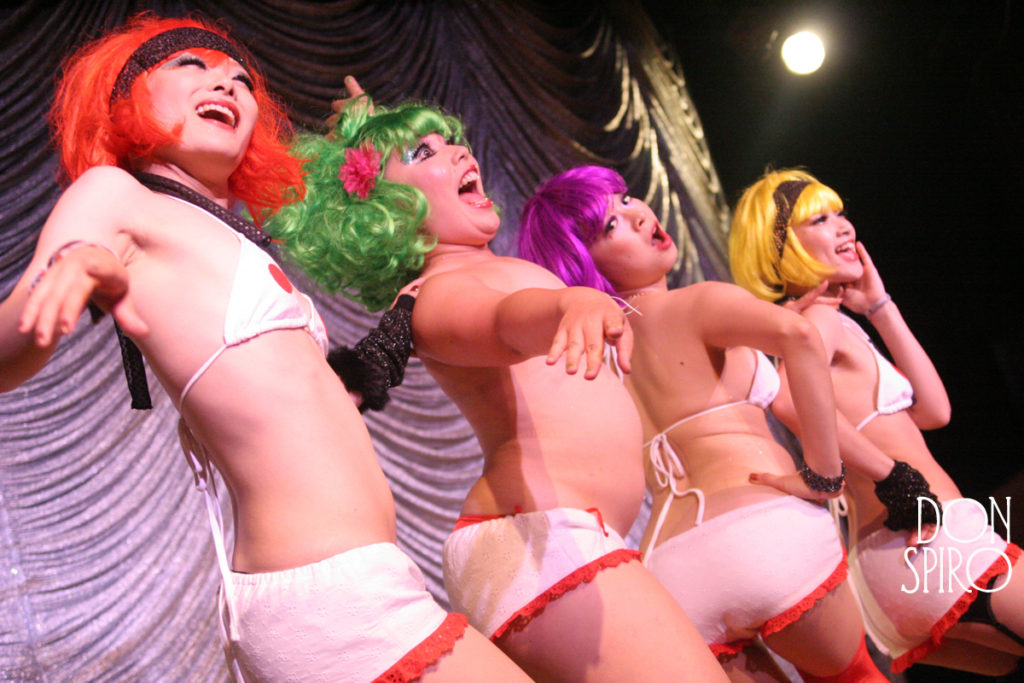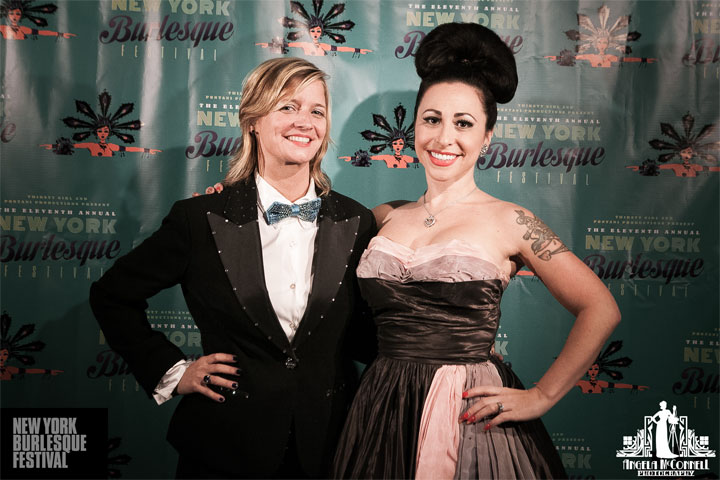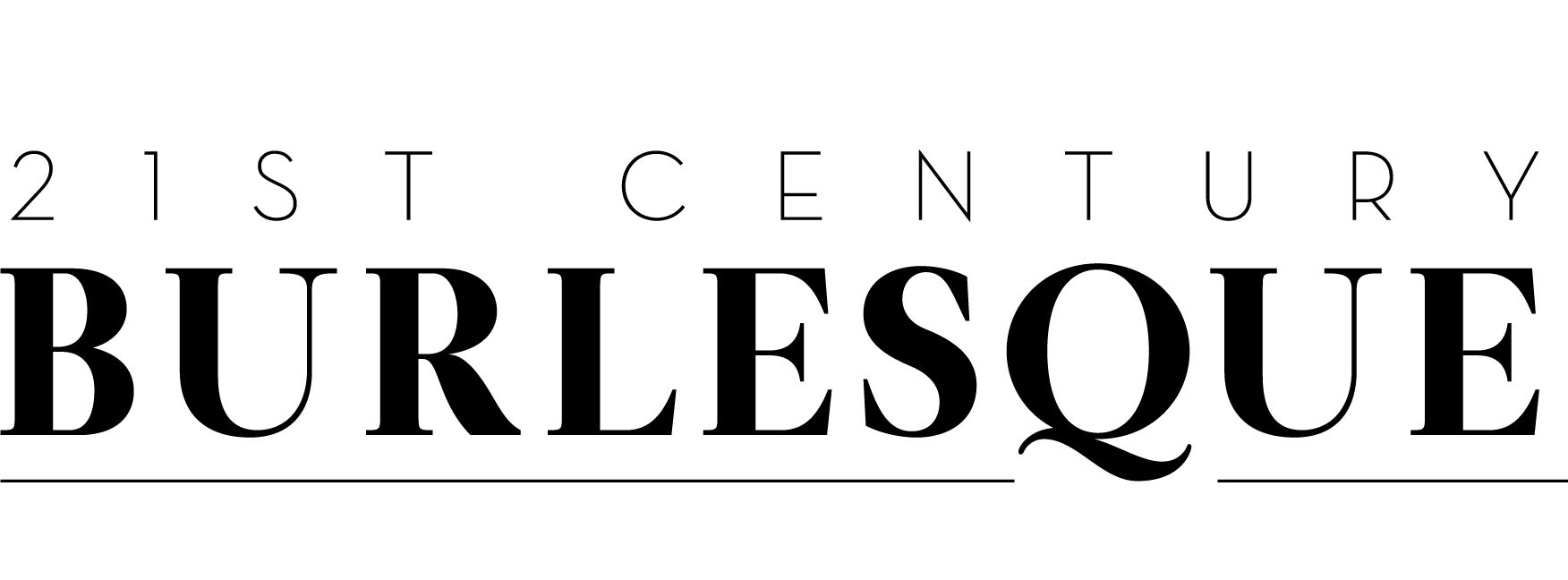Burlesque Festivals! They are the structure behind our scene, the canvas against which we can most fully display our artistry. They give us stages big enough for our most elaborate props, our fanciest choreography and our biggest costumes. We are well lit, photographed and filmed, feted by the audience and noticed by our peers.

This feature is sponsored by Sublime Boudoir
Through the web of festivals internationally, the showfolk of burlesque are able to network, evaluate our place in the burlesque pantheon, and see places we might otherwise have only dreamed of.
It’s a love of burlesque that spans languages, continents and eras, bringing together performers with a vast array of experiences. Festivals are, in many ways, the backbone of burlesque today. The Golden Age had touring clubs and circuits, the ‘wheels’ in which to perform, profit from and celebrate burlesque, but the evolution of the festival is unique to our time.

With many of the key festivals ticking off years, and some into their second decades, it’s timely to have a look at how our contemporary festival circuit developed to become the constellation of opportunities, travel, glamour and creative expression they are today.
I’ve spoken to some of the top names in burlesque festivals, performers from different stages of their careers, and reminisced about my own involvement as a performer on the scene since the legendary days of the early 00s. It’s been quite the nostalgic trip into what started as a nostalgic movement in itself. Read on for some inspiring history of the ‘now’.

TEASE-O-RAMA
Back in 2001, the lay of the land was more than a little different. Burlesque was taking its early steps back into the gaslight and leading the festival charge was the legendary Tease-O-Rama, which invited every performer they knew to New Orleans to be part of the first burlesque festival of the revival era.
It’s not called a premier burlesque event for nothing! It literally was number one. By 2002 Tease-O-Rama had already grown exponentially, and by the time I applied to perform in Hollywood in 2003, the pool of performers had grown large enough that the producers had begun to turn down applications.

The New York Burlesque Festival started up in 2003 and these two festivals, along with Miss Exotic World (now Burlesque Hall of Fame), sketched out the bones of the contemporary festival scene.
Tease-O-Rama holds a fond place in the hearts of those of us from that era. It was a live-action Who’s Who of the burlesque world, where you could go to meet everybody. The headliner list and billing functioned as an informal Burlesque Top 50 of its day. The headliners when I began were Dita Von Teese and Catherine D’Lish.

For a performer like me, a blow in from the land down under, this festival gave me the opportunity to meet all the stars. I worked my way up from attending an audition, to appearing on the main bill, to performing just before the headliners, to headlining the 2008 North American tour alongside Catherine D’Lish, Dirty Martini, Michelle L’amour, Kellita, emcee Kitten On The Keys, and legend Satan’s Angel.

Burlesque festivals were here to stay and this would the first of many, not only for me, but for thousands of performers internationally. Dirty Martini, a name seen on programme notes from all the early festivals and now a sought after headliner, notes that “Festivals started popping up like popcorn after BHoF got more popular as a reunion for neo-burlesque performers too. It became more financially sound as a model to attract out of town performers and to enable producers to get bigger venues.”
HOW DID TEASE-O-RAMA BEGIN?
I had seen The Velvet Hammer in LA in 1996 but I started to wonder… are there other burlesque and retro style dance troupes out there? I found this online yahoo group called “Burlesque”, and all of a sudden I had access to all these people across the world that were also performing burlesque and all had the same challenges. We swapped stories, shared advice and above all supported one another. I loved this community! There was zero competitiveness or egos. I felt like I found my people!
It was through the list that I met Alison Fensterstock, a writer living in New Orleans whose goal was to write about every burlesque performer for Atomic Magazine. She suggested that someone should put together a group event with all these performers. I don’t think she was planning on doing the show herself but within days everyone on the list was in such a flutter with ideas on how to make this event happen and that it should be held in Alison’s hometown, New Orleans.
I was hanging back, taking in all the excitement and I thought ‘I want the Devil-Ettes to go to New Orleans! I wanna help make this happen’. Because of my producer experience, before I knew it I had offered myself as the main promoter of the event!
We tried to pull together the best show we could with a printed program, merchandise, live bands, djs, dance and historical classes. Our goal was to create not just a showcase but an experience!
Baby Doe
THE FIRST YEARS
Back in the early 00s, Baby Doe Von Stroheim, together with Alan Parowski and Alison Fensterstock, would wait until dates for Miss Exotic World and New York Burlesque Festival were announced to spread the attendance over the year and not compete directly with each other. We were all, in those days, more or less friends.
“In the early neo-burlesque days all the festivals communicated with one another for shared advice,” says Baby Doe. “We were all friends working to make sure everyone had success.”

Now that kind of collaboration is impossible, and no longer really necessary. Mostly, a festival was a labour of love, operating with small, intensely dedicated teams.
“Over the years we have really developed a strong support team that works to make the New York Festival happen,” says co-producer Angie Pontani, “which is great because in the early years, Jen Gapay and I did everything ourselves. We would be running all over the city taping up posters incognito. I’m happy to not be doing that anymore!”
For Tease-O-Rama, the first year was all about inclusiveness and getting everyone together. Their method of casting the festival is mind-blowing by today’s sheer number of applications.

“That first year we invited every single performer we knew and we had them invite people THEY knew doing burlesque!” Baby Doe explains. “The crazy thing is that everyone said YES and more people kept on joining the show and offering up their talents. We had about 25 acts at the first TOR. By the 2003 event we had to take applications because there were more performers than we could schedule into the stage time.”

Angie Pontani notes the New York festival’s ground-breaking position at the time: “We were kind of a white tiger when we started; there were no other festivals going on. Just Exotic World and Tease-O-Rama. So it was a very unique event at that time for the performers, press and audience alike.”
AN IMPORTANT PLACE
Performers and festival directors recognise the special place that festivals hold for burlesque, different from regular club nights and as a complimentary or alternate performance opportunity to competitions.

It’s important to differentiate between festivals and competitions for many performers also. For Di’ Lovely, a festival debut occurred just months after she began performing burlesque in 2014: “There’s usually great camaraderie when there is no competition or crown at stake. We come to be inspired! Building morale at festivals is key to the vibrant energy.”
RAPID EXPANSION
The festival circuit has seen rapid development. Burlesque, once a niche art form, is now a recognised genre in itself. Baby Doe notices this growth and what it offers to performers: “It is exciting to see how big burlesque has become and the sheer amount of festivals. This gives performers a lot of options and a way to perform all over the world.”
The year Dita was unable to attend Tease-O-Rama because she was opening Harrods in London was a turning point in my mind. Burlesque was getting so big, so popular, that we weren’t always going to be able to see everyone together.

It sounds a little sad looking back, but there was a sense that we were beginning to take over the world. It was exhilarating. For those of us who attended in those days, that sense of connection is unique and due to the sheer numbers in burlesque now, difficult to emulate.
“I do sometimes wish there was still that magical friendship and connection among producers, but that is hard to maintain,” Baby Doe remarks.
When the Australian Burlesque Festival launched in 2010, the excitement in the country was palpable among us performers. By then the festival scene was well established overseas and Australia now had a festival of its own!

What was a short season in a burlesque club in Melbourne has become the world’s largest touring burlesque festival with shows in most Australian cities, led each year by producer and performer Dolores Daiquiri. The venues now hold hundreds and it’s common for a festival to be run, or co-run, by a performer from within burlesque.
Dirty Martini notes that bigger external promoters haven’t yet shown interest in taking on burlesque tours, but that too is changing. It’s the success of our festivals – staffed by our own – that has continued to push burlesque into the performance world.
THE MISSION OF THE BURLESQUE FESTIVAL
The impetus to produce a festival usually stems from a desire to build the world of burlesque in a particular area. A larger event makes it more financially viable to hire out a large theatre and book well known international headliners. A festival often obtains mainstream press and engages the local scene, and, in turn, new performers and audience members are attracted.

For Frauline Frauke and John Paul Bichard of Stockholm, the overall mission is to support and grow a better and more creative burlesque community, both nationally and internationally. Echoing the early days of collaboration and teaming up for maximum impact, the Stockholm Burlesque Festival works closely with several other festivals and show producers in Europe to encourage and support high quality, risk-taking events.
LEGENDS AT BURLESQUE FESTIVALS
In the early days, when most of us were attempting to describe what we did to a largely ignorant mainstream media, the attendance of burlesque legends at Tease-O-Rama provided a sprinkling of fairy godmother stardust, a connection to the history we were inspired by, and a stamp of legitimacy.

The presence of a burlesque legend added a depth of history and homage to a festival and created a sense that you were part of a legacy. Baby Doe recalls obtaining the blessing of the lady many of us fondly remember as the ‘Marilyn Monroe of Burlesque’ and operator of the old Miss Exotic World ranch:
“Before the first Tease-O-Rama we called up Dixie Evans at Exotic World to ask her permission to hold this huge burlesque convention. She gave us her blessing and attended most of the Tease-O-Rama events.”
I remember being on the 2008 Tease-O-Rama tour when we stopped in Portland overnight. Our hotel was known as a ‘party motel’ and it lived up to it.
There was a buck’s night there alongside us and they were drinking all night long. Each room had a blackboard at the front, and Dirty Martini and Kitten on the Keys were sharing a room and had ‘Dirty & Kitten’ on their blackboard.
The partygoers from the buck’s night thought this meant Dirty Kitchen and that there would be hookers available, so the pair fielded attention all night long. One of the funniest things was watching Satan’s Angel read the motel staff the riot act about it the following morning!
Lola the Vamp

There were always legends at Tease-O-Rama and their conventional panels were well-attended. In fact, it was meeting Kitty West – Evangeline the Oyster Girl herself – that decided me on a life in burlesque, though truth be told I was already pretty well convinced.
At the final audition for the new Evangeline, she gave me a stage direction in her husky New Orleans voice as I bumped my way through her signature track. “You know when you’ve just had an orgasm?” In that moment, I was sold. I wanted to be THIS kind of woman when I reached her years. I wasn’t alone.

The New York Burlesque Festival has placed a similar emphasis on the importance of legends. “Having legends like Tempest Storm, Tiffany Carter, Val Valentine and April March at our festival and knowing that they enjoyed it is so important to us,” says Angie Pontani.
IMPORTANT FOR PERFORMERS
The payoff arrives when a festival books a performer as a headliner. The Australian Burlesque Festival provides accommodation, flights and a fee to their annual selection of headliners.
For a performer like Betty Lovecat, who made her debut in 2015 at the Australian festival, festivals are a way to rise through the ranks and build an international profile. Di’ Lovely’s tally is now over ten festival appearances covering the US, Canada and Australia, and she also operates a brand of essential showgirl accessories called, fittingly, ‘Travelling Showgirl’. As her profile has grown, she has been able to take a break from applying.

The application process for performers has evolved and changed too. When I applied to perform at Tease-O-Rama in 2003, I remember photocopying my press clippings and shooting an act on miniDV film to burn to DVD and post by snail mail.
We had Yahoo groups as social media and many hours were whiled away on the Tease-O-Rama group as we ruminated on what burlesque was, what it is now, what it can be and what we wanted from it.

Social media has revolutionised this process, at the same time that the number of performers applying has increased. For the New York Burlesque Festival, the process of selecting performers has also moved with the times. “For the first 5 – 10 years we knew who everyone was; it was a much smaller scene,” says co-producer Jen Gapay. “Now, we hardly know anyone. It is amazing that we can work year round performing and producing and still know just the tip of the iceberg.”
I love going to all of these odd places and performing, especially now that more performers know who I am. It’s always surprising when I go to a city I’ve never been to and people are familiar with my work. I just got the sweetest present from the ladies at Glitter Kitten Boudoir in Norfolk Virginia. They looked up my measurements online and surprised me with a gorgeous dressing gown. It fit perfectly!
Dirty Martini
THE DEBATE
Most burlesque festivals share similar goals of promoting the art of burlesque. There’s really only one point of debate: the subject of application fees.
As each scene grows, so do the demands on producers, and many have now introduced application fees. While this topic is controversial and an extra expense for performers who may or may not be eventually booked for the event, festival directors can spend often hundreds of hours evaluating each submission and applicant’s videos.

Baby Doe doesn’t charge a fee to apply for any of her events, but for the Stockholm Burlesque Festival, it’s a way of weeding out the performers who are genuinely committed. “Our application fee is all about making sure that the people we select to perform really want to come,” says Fraulein Frauke.
Higher fees are very problematic as they impact the performers’ overall budget, and the ethics of using application fees as some sort of producer income is also questionable.
THE FUTURE OF BURLESQUE FESTIVALS
For me, talking to the producers of these festivals has been a moving experience, and reinforces the commitment I see from producers and performers every time I set foot on a festival stage. I’ve felt a strong responsibility to represent our roots and honour the work of every person who has worked on a festival for the love of the glitter.
As Dixie Evans used to say in those early revival days, “Burlesque is back baby!” And long may it continue to inspire, provoke, delight, seduce and enchant. See you somewhere on the circuit, sometime soon.
Burlesque Festivals: A History written by Lola the Vamp to mark the 10th anniversary of 21st Century Burlesque in 2017.




I love going to festivals! They’ve more or less replaced the old wheels .